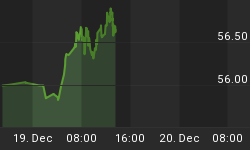U.S. oil inventories are at record levels, but there are a few glimmers of hope that the glut could be starting to subside.
Storing crude oil for sale at a later date is no longer profitable, as the futures curve has flattened out in recent weeks, depriving traders of a strategy that has served them well over the past few years. The market "contango," in which front-month oil contracts trade at a discount to oil futures six months or a year out, has all but vanished. The differential must be large enough to cover the cost of storage, and for many time spreads that is no longer the case. After three years of a steep contango, storing oil simply to take advantage of the time spreads is increasingly uneconomical.
One of the more expensive forms of storage is floating on tankers at sea, and because of the narrowing contango, floating storage is unprofitable today. Reuters reports that traders are beginning to unload crude from floating storage along the Gulf Coast. "Right now, traders aren't incentivized (to store)," Sandy Fielden, director of oil and products research at Morningstar, told Reuters in an interview. "It won't all stampede out of the gate, but inventory levels will come down. What will happen is that some of it will go to refineries, but a fair amount will be exported too."
Just as the rapid rise of floating storage in 2015 and 2016 was a sign of the deepening global supply imbalance, draining tankers of stored oil is an early sign that the supply glut is receding.
So far, it is only the most expensive storage facilities that are seeing drawdowns - the U.S. on the whole has seen crude stocks swell to record highs. But oil analysts argue that the surge in crude inventories is a symptom of stepped up imports booked at the end of 2016, when OPEC members pumped out huge volumes of crude just ahead of implementation of their deal to cut production. After a few weeks of transit time, the extra supply started showing up in U.S. storage data in January and February. In other words, the stock builds could be a temporary anomaly.
More recently, the time spreads for Brent futures also indicate increasing tightness in the market. John Kemp of Reuters notes that the spread between futures between April and May has sharply narrowed this month, meaning that the market is betting on a supply deficit as we move into the second quarter. The spreads for May-June and June-July are even smaller, trading at a few cents per barrel. This is a complicated way of saying that there isn’t a way to make money by buying oil, paying for storage, and selling it at a later date.
In a separate report, Reuters notes that inventories are also starting to drawdown in Asia, adding further evidence that the glut is not as bad as feared. As OPEC has throttled back on production, Asia is starting to see the impact. Reuters says that unusually large drawdowns took place across key oil hubs in Asia - 6.8 million barrels of oil were withdrawn from tanker storage off of Malaysia’s coast while Singapore saw a 4.1 million barrel decline and Indonesia’s storage fell by 1.2 million barrels.
"Dancing contango is now not a profitable thing to do, so we've sold out," an oil trading manager told Reuters. The trader no longer stores oil on tankers because of the disappearing contango.
The details of the contango and the oil futures market may seem complex and arcane, but the shift in time spreads is exactly what OPEC has been targeting with its supply cut. By cutting near-term supply, OPEC has succeeded in changing the economics of oil trading, forcing inventories to draw down. That could cause a short-term supply problem as oil is unloaded from storage, but in the long run OPEC needs to drain that excess supply from storage tanks around the world in order to spark higher prices.
Traders are more and more confident that the oil market will experience tighter conditions as we move into the second quarter, a bet that is reflected in both the time spreads and the exceptional buildup in bullish positions on crude oil. The oil price rally is not without its risks - very notable risks that have been covered in previous articles - but for now, the futures market is offering investors and traders some reasons for bullishness.
Link to original article: http://oilprice.com/Energy/Energy-General/Next-Oil-Rally-Futures-Say-Market-is-Tightening.html
By Nick Cunningham of Oilprice.com















